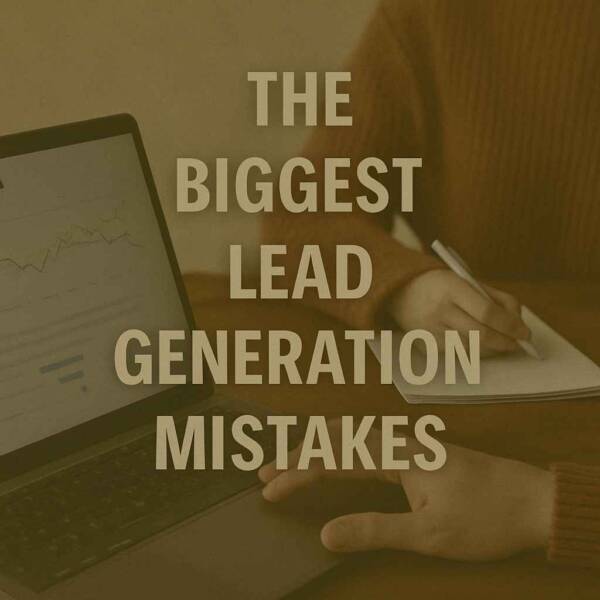The Difference Between B2B and B2C Lead Generation Strategies
In today’s world, businesses need customers to survive. They can sell directly to people or to other businesses. These two paths are called B2B and B2C. B2B stands for Business-to-Business. B2C means Business-to-Consumer. Each type has different ways to find new customers. These methods are known as lead generation strategies. Understanding these strategies can help businesses succeed. This article will explore the differences between B2B and B2C lead generation strategies.

Understanding B2B Lead Generation Strategies
![]()
B2B lead generation focuses on attracting other businesses. It involves building relationships and trust. Here are some key points about B2B lead generation:
- Target Audience: The audience is usually a group of decision-makers.
- Longer Sales Cycle: The process often takes longer because of many steps.
- Relationship Building: Companies focus on creating strong partnerships.
- Content Marketing: Businesses often use articles and whitepapers.
- Networking Events: Attending trade shows is common.
- Email Campaigns: Emails are personalized to engage potential clients.
B2B companies often rely on data-driven strategies. They analyze customer behavior to improve their approach. For example, software companies might provide free trials. This helps businesses see the product’s value before investing money.
Statistics show that 65% of B2B marketers find it challenging to generate leads. However, those who focus on relationship building often see better results. They create a loyal customer base over time.
Exploring B2C Lead Generation Strategies
![]()
B2C lead generation targets individual consumers. It aims to encourage quick purchases. Here are some important aspects of B2C lead generation:
- Target Audience: The audience is everyday shoppers.
- Shorter Sales Cycle: The buying process is usually quicker.
- Emotional Appeal: Ads often focus on feelings and desires.
- Social Media: Platforms like Instagram and Facebook are popular.
- Discount Offers: Promotions attract customers quickly.
- Influencer Marketing: Brands partner with popular figures.
B2C companies must grab attention fast. They use eye-catching visuals and catchy slogans. For instance, clothing brands often run seasonal sales to boost interest.
Research shows that 75% of consumers prefer brands that personalize offers. By understanding their audience, B2C companies can connect better. This leads to higher conversion rates and increased sales.
Key Differences in Target Audience Approach
![]()
The target audience is one of the biggest differences between B2B and B2C. In B2B, the focus is on businesses and organizations. In B2C, the focus shifts to individual consumers. Here are some comparisons:
- Decision-Makers: B2B targets specific roles like managers.
- Buying Motivation: B2B decisions are often logical; B2C relies on emotions.
- Purchase Size: B2B deals usually involve larger amounts of money.
- Communication Style: B2B uses formal language; B2C is more casual.
- Sales Process: B2B requires multiple approvals; B2C is often instant.
- Brand Loyalty: B2B builds long-term relationships; B2C seeks immediate sales.
These differences shape how each business markets its products. For example, a tech company may spend time explaining features to a corporation. Meanwhile, a snack brand might focus on fun advertising to appeal to kids. Understanding the audience is crucial for success.
Content Marketing in B2B vs. B2C
![]()
Content marketing plays a vital role in both B2B and B2C lead generation. However, the content types differ significantly. Let’s look at how they vary:
- Formats: B2B uses whitepapers and case studies. B2C prefers videos and social media posts.
- Purpose: B2B content educates and informs. B2C content entertains and engages.
- Distribution: B2B shares content through emails; B2C uses social channels.
- Length: B2B content is often longer and detailed.
- SEO Focus: B2B focuses on industry-specific keywords.
- Calls-to-Action: B2B invites readers to learn more; B2C encourages immediate purchase.
For example, a software company might create a detailed guide on improving productivity. A clothing retailer, on the other hand, could post a fun video showcasing their latest fashion line. Each strategy aligns with the goals of the target audience.
Utilizing Social Media for Lead Generation
![]()
Social media is a powerful tool for both B2B and B2C lead generation. However, the platforms and tactics differ:
- B2B Platforms: LinkedIn is popular for professional networking.
- B2C Platforms: Instagram and TikTok attract younger audiences.
- Content Type: B2B shares informative posts; B2C shares engaging visuals.
- Engagement: B2B fosters discussions; B2C encourages likes and shares.
- Advertising: B2B ads focus on business solutions; B2C ads highlight lifestyle benefits.
- Community Building: B2B creates groups; B2C builds fan pages.
For example, a consulting firm might share industry insights on LinkedIn. A toy brand could post fun challenges on TikTok. Each approach is tailored to engage their specific audience effectively.
The Role of Email Marketing in Both Strategies
![]()
Email marketing remains essential for both B2B and B2C. Yet, the strategies used differ:
- Audience Segmentation: B2B segments by industry; B2C segments by interests.
- Content Focus: B2B emails provide valuable insights; B2C emails offer promotions.
- Frequency: B2B sends fewer, more detailed emails; B2C sends regular updates.
- Personalization: B2B personalizes based on role; B2C personalizes based on behavior.
- Call-to-Action: B2B invites inquiries; B2C prompts immediate purchases.
- Follow-Up: B2B follows up for meetings; B2C follows up for feedback.
A real estate company might send market reports to potential buyers. A beauty brand could send discount codes to frequent shoppers. Each email strategy is crafted to meet the needs of its audience.
Conclusion: Key Takeaways of B2B and B2C Lead Generation
![]()
In conclusion, B2B and B2C lead generation strategies differ greatly. B2B focuses on building long-term relationships with businesses. B2C aims for quick sales to individual consumers. Knowing these differences helps businesses choose the right methods. Whether through content marketing, social media, or email, each strategy serves a unique purpose.
By understanding their audience, businesses can tailor their approaches. This leads to more effective marketing efforts and ultimately, greater success. Whether you’re targeting businesses or consumers, knowing your path is essential for growth.




